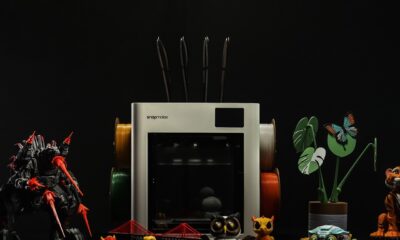Science
Researchers Convert Walnut Shells and Water into Electricity

Researchers at the University of Waterloo have developed an innovative technology that transforms discarded walnut shells and a drop of water into electricity. This breakthrough utilizes the natural architecture of walnut shells to efficiently transport electrically charged ions, creating what is known as a water-induced electric generator (WEG).
Nazmul Hossain, a PhD student in mechanical and mechatronics engineering at the university, emphasized the simplicity of the process. “It all happens with nothing more than a single droplet of water and the shell’s natural architecture, no crushing, soaking, or complex processing needed,” he explained. This method demonstrates a powerful example of converting waste into clean energy using natural resources.
Harnessing Hydrovoltaic Energy
The technology behind the WEG relies on hydrovoltaic energy harvesting, where evaporating water flows through the porous internal structures of the walnut shells. Initial inspiration struck when Hossain examined a hazelnut shell under an electron microscope, revealing its complex internal structures designed for transporting water and nutrients. Following this discovery, tests were conducted on four different types of nut shells, concluding that walnut shells offered the most promise for energy production.
The construction of the WEG is straightforward. It consists of walnut shells, water droplets, electrodes, wires, and a 3D-printed base, resulting in a device roughly the size of a coin.
“This technology could be a significant advancement for powering small electronic devices, especially in remote or off-grid areas,” Hossain stated. He envisions various applications, including environmental sensors for forest monitoring, Internet of Things (IoT) devices, and wearable health technology, all powered by tiny droplets of water harvested from the environment.
Future Applications and Development
Looking ahead, researchers aim to further develop this technology into wearable devices capable of harvesting moisture from sweat or rain. Such advancements could potentially power various small devices and sensors, including those designed to detect water leaks.
This discovery marks a noteworthy step in sustainable energy solutions, showcasing the potential of natural materials to generate clean electricity. The project highlights the ongoing commitment of the University of Waterloo to innovation in energy technology, positioning it as a leader in environmentally friendly engineering.
As researchers continue to refine this technology, the implications for clean energy in everyday applications become increasingly promising. The integration of waste materials into energy solutions not only addresses sustainability challenges but also paves the way for a cleaner, more efficient future.
-

 Science2 months ago
Science2 months agoToyoake City Proposes Daily Two-Hour Smartphone Use Limit
-

 Health2 months ago
Health2 months agoB.C. Review Reveals Urgent Need for Rare-Disease Drug Reforms
-

 Top Stories2 months ago
Top Stories2 months agoPedestrian Fatally Injured in Esquimalt Collision on August 14
-

 Technology2 months ago
Technology2 months agoDark Adventure Game “Bye Sweet Carole” Set for October Release
-

 World2 months ago
World2 months agoJimmy Lai’s Defense Challenges Charges Under National Security Law
-

 Technology2 months ago
Technology2 months agoKonami Revives Iconic Metal Gear Solid Delta Ahead of Release
-

 Technology2 months ago
Technology2 months agoSnapmaker U1 Color 3D Printer Redefines Speed and Sustainability
-

 Technology2 months ago
Technology2 months agoAION Folding Knife: Redefining EDC Design with Premium Materials
-

 Business2 months ago
Business2 months agoGordon Murray Automotive Unveils S1 LM and Le Mans GTR at Monterey
-

 Technology2 months ago
Technology2 months agoSolve Today’s Wordle Challenge: Hints and Answer for August 19
-

 Lifestyle2 months ago
Lifestyle2 months agoVictoria’s Pop-Up Shop Shines Light on B.C.’s Wolf Cull
-

 Technology2 months ago
Technology2 months agoApple Expands Self-Service Repair Program to Canada








